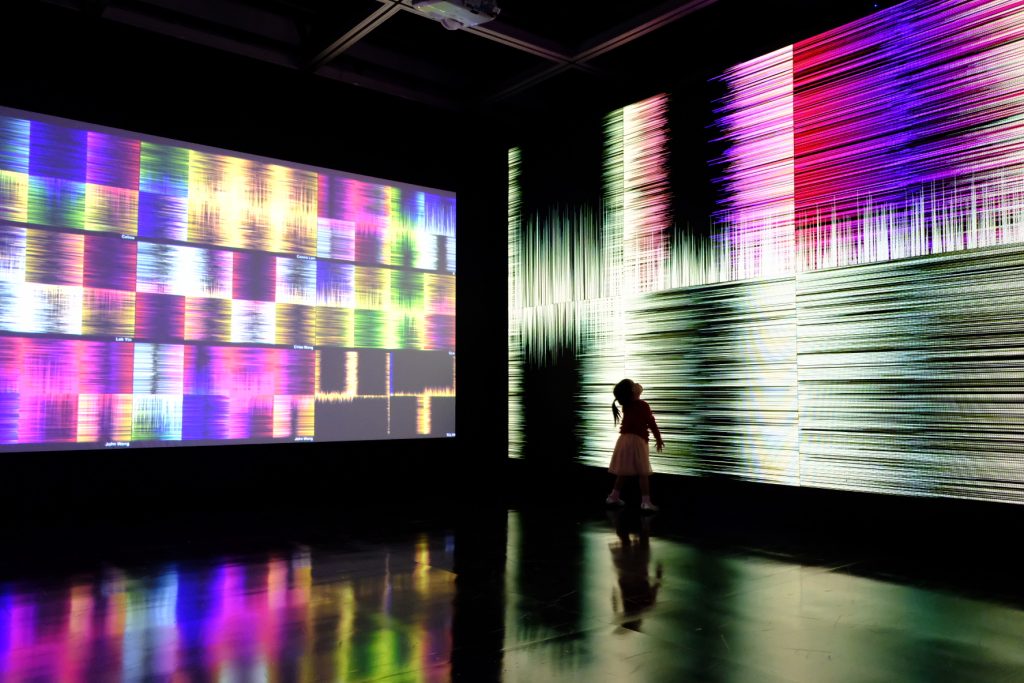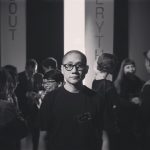Photo courtesy John Wong, artist, co-founder, and CEO of a creative agency, dontbelieveinstyle (DBIS), since 2005.
The SIGGRAPH Art Gallery is a space for creative contemplation. For 2019, submitting artists examined the present and considered the question: “What can we do?” We sat down with the creator behind RuShi, 1 of 12 chosen works, to learn about the project and its inspiration. Continue reading to discover what he had to say.
SIGGRAPH: You have over 20 years of experience developing multimedia creative projects. Can you share a bit about what inspires you to blend art with technology?
John Wong (JW): Art always goes with technology. Indeed, everything involves different kinds of technologies. Technology inspires me when it extends or changes the understanding of things in a different way. In other words, possibility. “Possibility” is totally opposite to “limitation.” And limitation is the fate of humanity. So, I think this is maybe why artists [are] always in love with [the combination of] art and technology. In the end, it’s all about creativity and imagination.
SIGGRAPH: Talk a bit about the development process for “RuShi.” Technologically, what do you find exciting about the final experience you will present to SIGGRAPH 2019 participants?
JW: It all begins with my personal experience. I started learning Chinese fortune-telling and I-Ching (易經) over 10 years ago. I used to be a super superstitious person. You know, when people are at a low point in their life, they are easily driven by fear, and superstition [feeds on] fear. Now, 10 years later, I’m still studying I-Ching and different Chinese Feng Shui (風水) applications, but I have no more fear. Instead of wanting to predict my future, I’m now more interested in the study of history, Chinese cultures, social science, and understanding myself. I find [the Chinese fortune-telling method] BaZi very interesting. Indeed, it’s one of the oldest Chinese algorithmic methods. BaZi is based on data analytics and how that works for prediction. That is exactly what we hear about every day: big data and artificial intelligence.
When my son, his name is also RuShi (如是), was born in 2017, I wanted to go back to create my art work. And to go back to the origin of my passion. It just so happens that fortune-telling and I-Ching — art and technology — are part of my daily studies. So, that is how RuShi [the project] began.
SIGGRAPH: “RuShi (如是)” translates to “as is” in English. What do you want SIGGRAPH 2019 participants to understand about the project going into the experience?
JW: RuShi (如是) means “as is:” nothing more or less, but the true colors of something. Every Buddhist scripture starts with these two words to show that the scripture has no interpretation by anyone else and totally comes from Buddha.
RuShi [the project] is a piece of algorithmic interactive installation art that uses the ancient Chinese fortune-telling algorithm “BaZi” (八字). In English, BaZi means “eight words.” BaZi is an application that uses eight words to analyze a person’s destiny. Every person’s date of birth can be used as data and converted into eight words, and the eight words are all translated into five elements: gold, wood, water, fire, and earth. The interrelationship of the five elements can predict one’s character and happenings throughout his or her whole life, and it has become widely used since China’s Song Dynasty.
SIGGRAPH: This project uses big data (data analysis and visualization) and AI to yield a basic flow of colors that is ultimately about prediction, fate, and superstition. Can you share what inspired you to focus on fortune-telling? Did you have any key collaborators who helped create the final experience?
JW: This work is about big data and prediction, fate and superstition. It’s about questioning what we really need or want in the age of big data and AI. When using the ancient data analysis application and taking out all the extra cultural signs and materialistic interpretations, there remains only the “as is,” i.e., the five elements. Participants type in their date of birth, and the fortune-telling algorithm turns out showing only the data visualization of the different audience’s flow of colors. We can see no prediction of life from this machine, but only time, changes of color, and the beauty of different people’s balance of life.
“What do you want to know?” Both data scientists and fortune tellers have the ability to turn the world of uncertainty into quantified numerical existence and then give us an answer with future predictions. What if big data and AI are the new superstitions? What if a fortune teller or data scientist is only a storyteller? Algorithms are everywhere. We are now over the age of posthumanism. Data is bigger than humans, and AI is much more powerful than humans. At the same time, only a very limited population has the ability to understand or control how AI works; indeed, it’s the same scenario as the field of fortune-telling. The majority can only choose to be part of it or not or to believe in it or not. We allow ourselves to believe in something that we don’t understand, as if we are seeing a fortune-teller and hoping the mysterious algorithm can show us our future and tell us what we should do. Indeed, all of the questions we want to ask the fortune-teller are unconsciously built on fear. But in RuShi, each member of the audience will only see his or her, and the others’, flow of colors. It goes back to basics. I want the audience to see only the beauty of balance — different people’s balance — without the interpretation of the storyteller.
Both data scientists and fortune tellers have the ability to turn the world of uncertainty into quantified numerical existence and then give us an answer with future predictions.
[In terms of a team,] yes, I do have a team in helping me to put up this final experience, especially great thanks go to Kwun and Alexson, both of whom help me to work on the programming of the back-end and the data visualization. I explain to them how the BaZi calculates in order for the five elements of the eight words will be visualized.

SIGGRAPH: For the first time in years, the SIGGRAPH 2019 Art Gallery was juried rather than curated. How did you hear about the space and decide to submit? What, in particular, excites you about sharing RuShi with participants in L.A.?
JW: It’s my first time at SIGGRAPH. I’m super excited to present my work through such a great platform. I am hoping the participants who visit have fun experiencing their own balance of colors.
The SIGGRAPH 2019 Art Gallery is open to registrants at the following pass levels: Business Symposium, Full Conference Platinum, Full Conference, Select Confrences, Experiences. Click here to register to visit the gallery, 28 July–1 August. Preview the full program below.
 John Wong has over 20 years of experience in multimedia and cross-disciplined creative projects, including art, entertainment, and commercial. His debut feature, “The Tourist,” was screened in the 27th Hong Kong International Film Festival in 2002.
John Wong has over 20 years of experience in multimedia and cross-disciplined creative projects, including art, entertainment, and commercial. His debut feature, “The Tourist,” was screened in the 27th Hong Kong International Film Festival in 2002.



